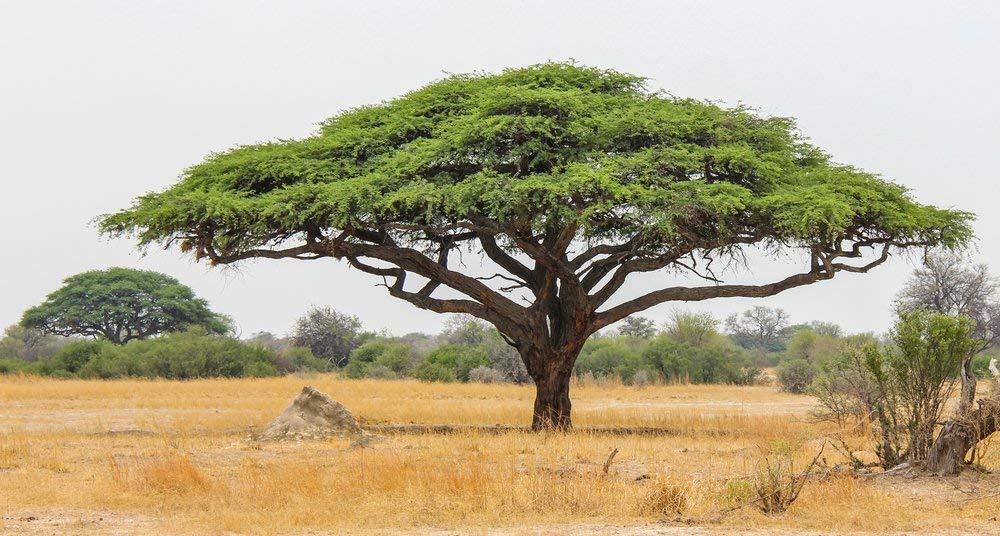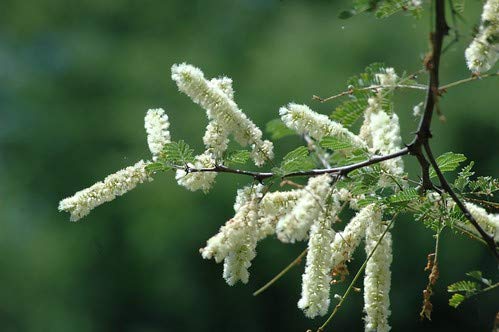


Green Paradise Acacia Senegal Sapling Plant for Bonsai Lovers Live Healthy Plant
Guaranteed Safe Checkout
Acacia Senegal, also known as gum acacia or gum arabic tree, is a small to medium-sized deciduous tree native to the dry regions of Africa, particularly Sudan, Senegal, and Nigeria. It belongs to the Fabaceae family, which is the pea family of flowering plants.
The Acacia Senegal tree is known for its economic and commercial importance due to the gum Arabic it produces. Gum Arabic is a natural gum obtained from the hardened sap or exudate of the tree's trunk and branches. It is a complex mixture of polysaccharides and glycoproteins that dissolve easily in water. Gum Arabic is widely used in various industries, including food, pharmaceuticals, cosmetics, and textiles.
The tree itself typically grows up to 5-12 meters (16-39 feet) in height, with a spreading crown and thorny branches. It has compound leaves with small leaflets and produces fragrant, small, pale yellow flowers arranged in spherical clusters. The tree's bark is rough and grayish-brown in color.
Acacia Senegal trees are well-adapted to arid and semi-arid environments, often found in savannas and scrublands. They have long taproots that allow them to access water deep in the soil, making them resilient to drought conditions. Trees also play a crucial role in soil conservation and restoration due to their ability to fix atmospheric nitrogen and improve soil fertility.
Apart from its commercial uses, Acacia Senegal is also utilized for traditional medicine, as the tree's bark, leaves, and gum have been used in various herbal remedies for treating ailments like sore throat, coughs, diarrhea, and skin conditions.
Overall, Acacia Senegal is a valuable tree species both economically and ecologically, known for its gum Arabic production and ability to thrive in harsh environments.
How To Grow Acacia Senegal Tree
To grow Acacia Senegal, also known as the gum Arabic tree, you can follow these steps:
Climate and soil conditions:
Acacia Senegal thrives in arid and semi-arid regions. It prefers a warm climate with temperatures ranging from 20 to 40°C (68 to 104°F). It can tolerate poor soils but grows best in sandy or loamy soils with good drainage.
Seed selection and preparation:
Obtain high-quality seeds from a reputable source. Before planting, soak the seeds in warm water for 24 hours to enhance germination. Some sources also recommend scarifying the seeds by nicking or scratching the seed coat to help with water absorption.
Planting location:
Choose a suitable planting site that receives full sunlight. Ensure the soil is well-drained, as waterlogged conditions can harm the tree.
Planting process:
1 . Dig a hole in the planting site that is slightly larger than the seed.
2 . Place the soaked and scarified seed in the hole.
3 . Cover the seed with loose soil, ensuring it is not planted too deep (approximately 1-2 centimeters or 0.5-1 inch deep).
4 . Water the area gently to settle the soil around the seed.
Irrigation:
During the establishment phase, provide regular and moderate watering to help the young seedlings establish their root systems. Once the trees are established (after a few months), they are generally drought-tolerant and do not require frequent watering. However, during prolonged dry spells, supplementary irrigation may be necessary.
Weed control:
Control competing weeds around the seedlings to reduce competition for water, nutrients, and sunlight. Mulching the base of the tree can help suppress weeds and conserve soil moisture.
Pruning:
Acacia Senegal typically develops a single-stemmed tree form naturally. However, if you want a multi-stemmed shrub-like form, you can prune the tree accordingly. Pruning is best done during the dormant season.
Protection from pests and diseases:
Monitor the tree for any signs of pests or diseases. Common pests that can affect Acacia Senegal include aphids, beetles, and caterpillars. Insecticidal soaps or organic pest control methods can be used if necessary.
Harvesting gum Arabic:
Acacia Senegal is primarily grown for its gum Arabic, a resinous substance obtained from the tree. The gum is harvested by making incisions in the bark, allowing the sap to ooze out and solidify. Harvesting typically occurs when the trees are about 5-7 years old.
Remember to check with local agricultural authorities or experts for specific guidance on growing Acacia Senegal in your particular region, as local conditions may vary.




